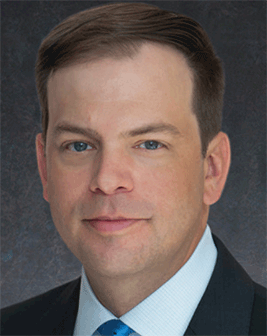It Looks Like MSHA Started With The OSHA Rule And Proceeded To Cut Everything That Looked Even Remotely Reasonable.
By Brian Hendrix
Way back in 2019, we heard that MSHA intended to put the “H” back in MSHA. MSHA Assistant Secretary David Zatezalo, told Congress that MSHA would to “put the ‘H’ back in ‘MSHA,’” by “aggressively enforc[ing] existing standards to ensure that operators protect miners from exposure to respirable dust and quartz.”
Then and today, there was widespread compliance with MSHA’s existing standards related to silica. Most importantly, the collective health of the workforce in metal/non-metal mining had never been better, and it has since continued to improve.
Undaunted by all that success, MSHA has just announced a new silica rule (Lowering Miners’ Exposure to Respirable Crystalline Silica and Improving Respiratory Protection). Reviewing the proposed rule, you might suspect that Chris Williamson decided to one-up Mr. Zatezalo by replacing the “S” in MSHA with “Silica.”
As Expected
Everyone had (or should have) expected MSHA to lower the exposure limit of 50 µg/m3 in the proposed rule, and that’s what it did. MSHA proposes to set the permissible exposure limit (PEL) of respirable crystalline silica at 50 µg/m3 for a full shift exposure, calculated as an eight-hour time-weighted average for all miners. The proposed PEL isn’t the problem.
The problem or, more accurately, problems with the rule are all the other requirements. MSHA clearly used OSHA’s silica rule as a starting point, although MSHA didn’t simply cut-and-paste OSHA’s rule and call it a day.
It looks like MSHA started with the OSHA rule and proceeded to cut everything that looked even remotely reasonable. If you are looking for anything like OSHA’s “Table 1”—or a task-specific list of acceptable exposure control methods (engineering and administrative controls), you’ll be disappointed.
It looks like MSHA’s next step in drafting the proposed rule was to incorporate the United Mine Workers of America’s (UMWA) list of demands from UMWA’s response to MSHA’s 2019 Request for Information (RFI). UMWA got almost exactly what it wanted from MSHA.
The result is a proposed rule that spans 168 dense pages of the Federal Register. It is chock full of poorly supported, ambiguous and wholly unjustified requirements that MSHA expects an average, neighborhood MSHA inspector to explain, interpret and enforce.
For example, in addition to a lower PEL, the proposed rule includes an “Action Level” of 25 µg/m3. If sampling indicates a potential exposure “at or above the proposed action level and at or below the proposed PEL,” MSHA proposes to require mine operators to “conduct periodic sampling until miners’ exposures are below the action level.” The sampling and analysis requirements in the proposed rule merit an article of their own, but I will say that MSHA seems to think that every mine operator has an industrial hygienist on staff.
Compliance With PEL
To achieve compliance with the PEL (or the Action Level), the proposed rule requires mine operators to install and maintain “feasible” engineering controls. The use of administrative controls and personal protective equipment for compliance purposes is largely unacceptable under the proposed rule.
MSHA states in the proposed rule that “the use of respiratory protection equipment, including powered air-purifying respirators (PAPRs), would not be permitted as a control to achieve compliance with the proposed PEL because engineering controls are more effective than respirators in protecting miners.
However, temporary non-routine use of respirators would be allowed under limited circumstances.” The bottom line is that, under the proposed rule, it’s essentially engineering controls or bust.
Although the use of respiratory protection equipment for compliance purposes isn’t a real option under the proposed rule, MSHA went ahead and used the proposed rule “incorporate by reference the American Society for Testing and Materials (ASTM) International 2019 standard entitled ‘Standard Practice for Respiratory Protection,’ for respirable crystalline silica and all other regulated airborne contaminants.”
According to MSHA, it is merely updating and replacing “existing outdated requirements for respiratory protection with a standard that reflects the latest advances in respiratory protection technologies and practices.”
brianMore Paperwork
MSHA fervently believes that more paperwork will make our mines safer and healthier. Thus, under the proposed rule, mine operators would be required to “make a record of corrective actions . . . and the dates of those actions.” MSHA claims that these records will “help the operator and MSHA identify whether existing controls are effective, or whether maintenance or additional control measures are needed.”
The proposed rule also includes extensive “medical surveillance requirements for M/NM miners, modeled on existing medical surveillance requirements for coal miners.” MSHA’s reasoning must be that, if it failed or wasn’t effective in coal, surely it will be effective and work if we expand it to the rest of the industry.
I’m just hitting the high spots here. Suffice it to say, the proposed rule is a monster:
- On the upside, it’s a proposal.
- On downside, the final rule will likely look very similar to the proposed rule.
Now that MSHA has published the proposed rule, the public has only 45 days to digest the rule, and prepare and submit comments on it. MSHA has also scheduled three public meetings on the rule, one at headquarters in Arlington, Va., one in Denver and a virtual hearing. MSHA will then review the comments and prepare a final rule.
While MSHA is obligated to respond to comments, it is not obligated to make any changes to the proposed rule.

Brian Hendrix is a partner at Husch Blackwell LLP. As a member of the Energy & Natural Resources group, he advises clients on environmental, health and safety law, with a focus on litigation, incident investigations, enforcement defense and regulatory compliance counseling. He can be reached at
[email protected].
